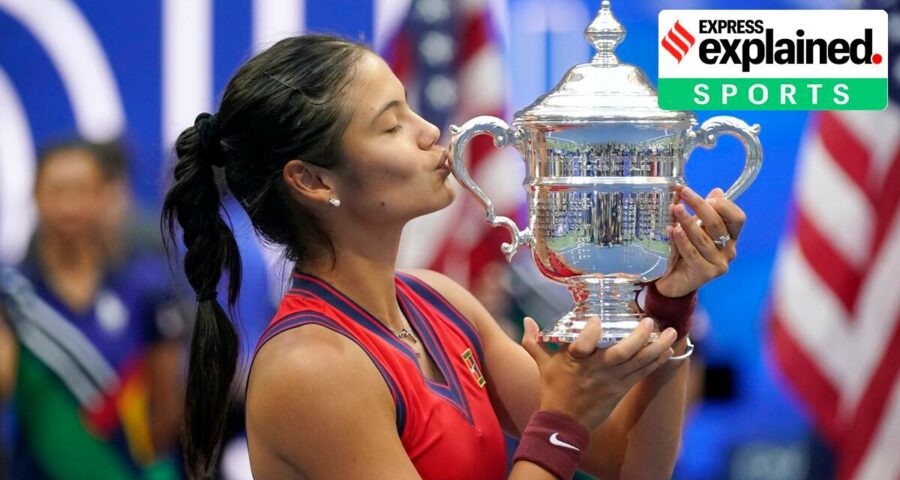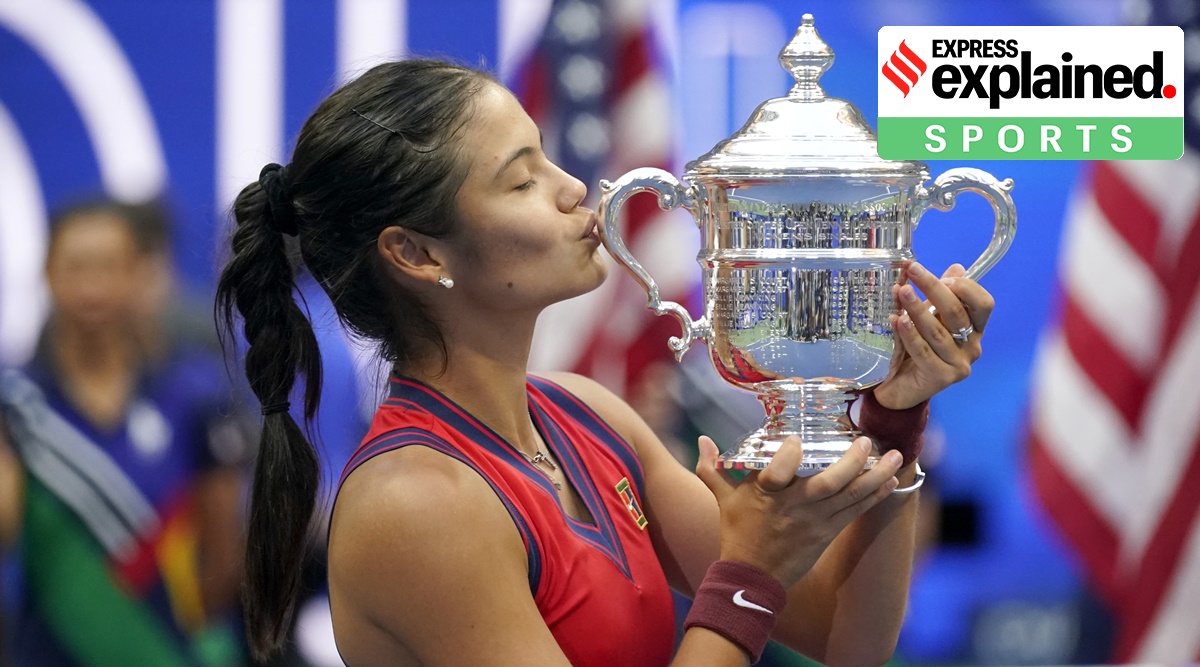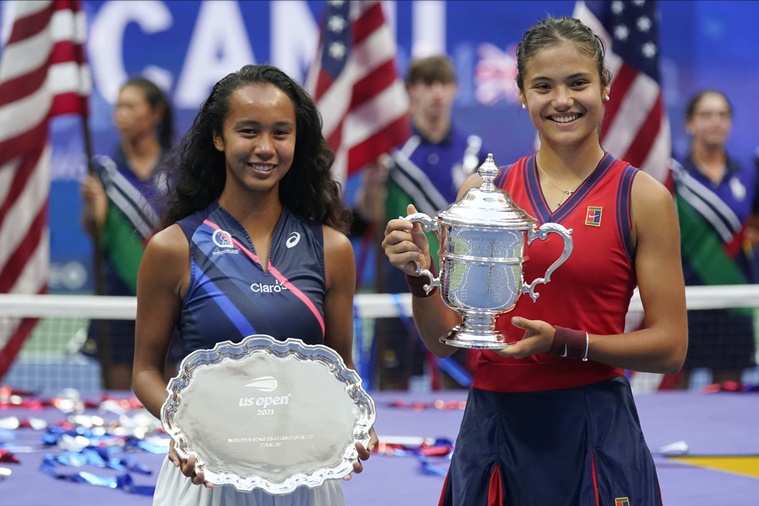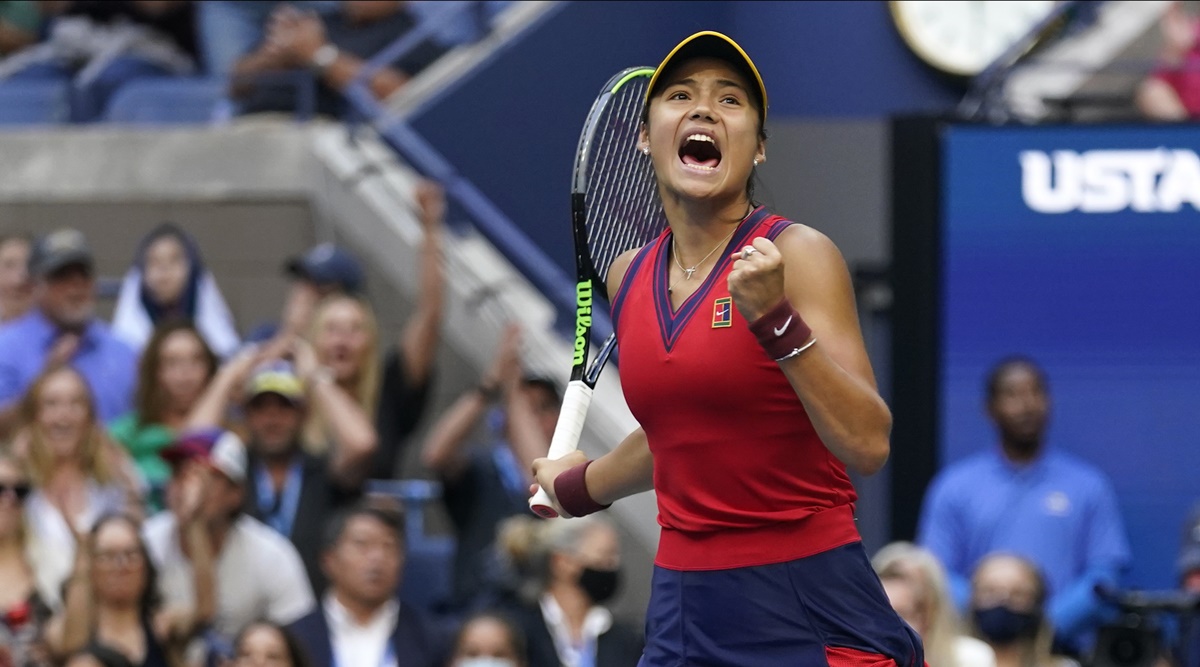The longest match Emma Raducanu played in the tournament, the final lasted an hour and 51 minutes, wasn’t just about mindless ball-striking. There was a method to the glorious madness.
The first all-teenage Grand Slam final since 1999 played out just as was expected of an all-teenaged match. There were carefree, risk-taking strokes mixed with graceful technique, impressive composure, and with Emma Raducanu and Leylah Fernandez involved, a whole lot of smiles.
Eventually, it was the 18-year-old Raducanu who came up with a 6-4, 6-3 win over the 19-year-old Canadian in what had been an improbable, but not undeserved, US Open run for both players. The Brit became the first woman from her country to win a Grand Slam title since Virginia Wade won the 1977 Wimbledon crown. She became the first ever qualifier to reach a Major final, let alone winning it altogether. And the World No 150 became the lowest ever ranked US Open champion, second only to the unranked Kim Clijsters (2009) – Raducanu is projected to rise up to the World No 23 rank on Monday.
She went from being a qualifiers to a champion without dropping a single set. But the longest match she played in the tournament, the final lasted an hour and 51 minutes, wasn’t just about mindless ball-striking. There was a method to the glorious madness.
Here’s how the final was won
https://youtube.com/watch?v=hRydTS4kCaE%3Fversion%3D3%26%23038%3Brel%3D1%26%23038%3Bshowsearch%3D0%26%23038%3Bshowinfo%3D1%26%23038%3Biv_load_policy%3D1%26%23038%3Bfs%3D1%26%23038%3Bhl%3Den-US%26%23038%3Bautohide%3D2%26%23038%3Bwmode%3Dtransparent
Targeting backhand, then forehand, then both
In the opening exchanges, it was clear that Raducanu had come with a plan to target the left-handed Fernandez’s backhand. Even if it meant playing risky shots over the higher part of the net, Raducanu would whack the ball to Fernandez’s right whenever possible. The ploy worked for a while as Fernandez could not unleash her angled forehand strokes as often as she would have liked.
By the sixth game though, at 3-3, the Canadian had started to anticipate Raducanu’s shot selection. So the Brit changed tactics and began hitting to the Fernandez forehand. As the match progressed, she’d vary the direction in her shots and keep the Canadian on the run, and guessing where the next ball would come.
Newsletter | Click to get the day’s best explainers in your inbox
The Righty Serve
Left-handers tend to have the unique advantage of playing against right-handers not used to facing southpaws – that’s arguably what helped Fernandez get the better of defending champion Naomi Osaka in the third round. One of the most prominent strategies used by left-handers is the ‘lefty’ serve – an angled serve from the ad-court deep into the backhand side of a right-hander, drawing the opponent out of position.
However, Raducanu proved that the same could be true for a right-hander serving with a heavy angle into a lefty’s backhand – the ‘righty serve’ if you will.
Raducanu’s early strategy in the match was to aim at Fernandez’s backhand, a tactic that changed. But her service direction remained overwhelmingly unchanged, and it was something that continued to bother Fernandez. The Brit would often serve wide from the deuce-court, and then down the T from the ad-court.
But she would still throw in a few serves the other way around. Crucially, the last two points in the match, with Raducanu serving for the match at 5-3, deuce, she served down the T, and on match point, hit her second ace of the match with wide.
Big returns of serve
Before the final, Raducanu’s return points win percentage was 52 percent, which was second among all players at the US Open. She continued to return with relish against Fernandez as well.
She won 38 of 78 receiving points (49 percent) in the match (22 of 46 in the first set and 16 of 32 in the second).
The most important returns she made though came in the sixth game of the second set. She started the game off with a powerful backhand down the line return winner, hit another big return to set up the point that was killed off with a forehand winner to go 0-30 up.
At 30-40, there was an element of luck involved. Fernandez got a hold of a strong first serve that drew a weak and short return. As the Canadian stepped up to slot home, Raducanu guessed the right way and played a passing forehand winner to go 4-2 up – the break that decided the match.
Better numbers
Raducanu finished the highly entertaining match with a tally of 22 winners and 25 unforced errors. Fernandez meanwhile scored 18 winners but had 26 unforced errors.
Crucially for Fernandez, her first serve percentage was low – she hit only 45 of her 78 first serves in (at 58 percent), and could win just 25 of them (56 percent). Comparatively, Raducanu made 48 of 70 first serves in (69 percent), and won 32 points on the first serve (67 percent).
With Fernandez’s shaky first serve, the Canadian was made to face 18 break points, but she did save 14 of them. Raducanu faced nine break points but was broken only twice.
Source: Read Full Article






